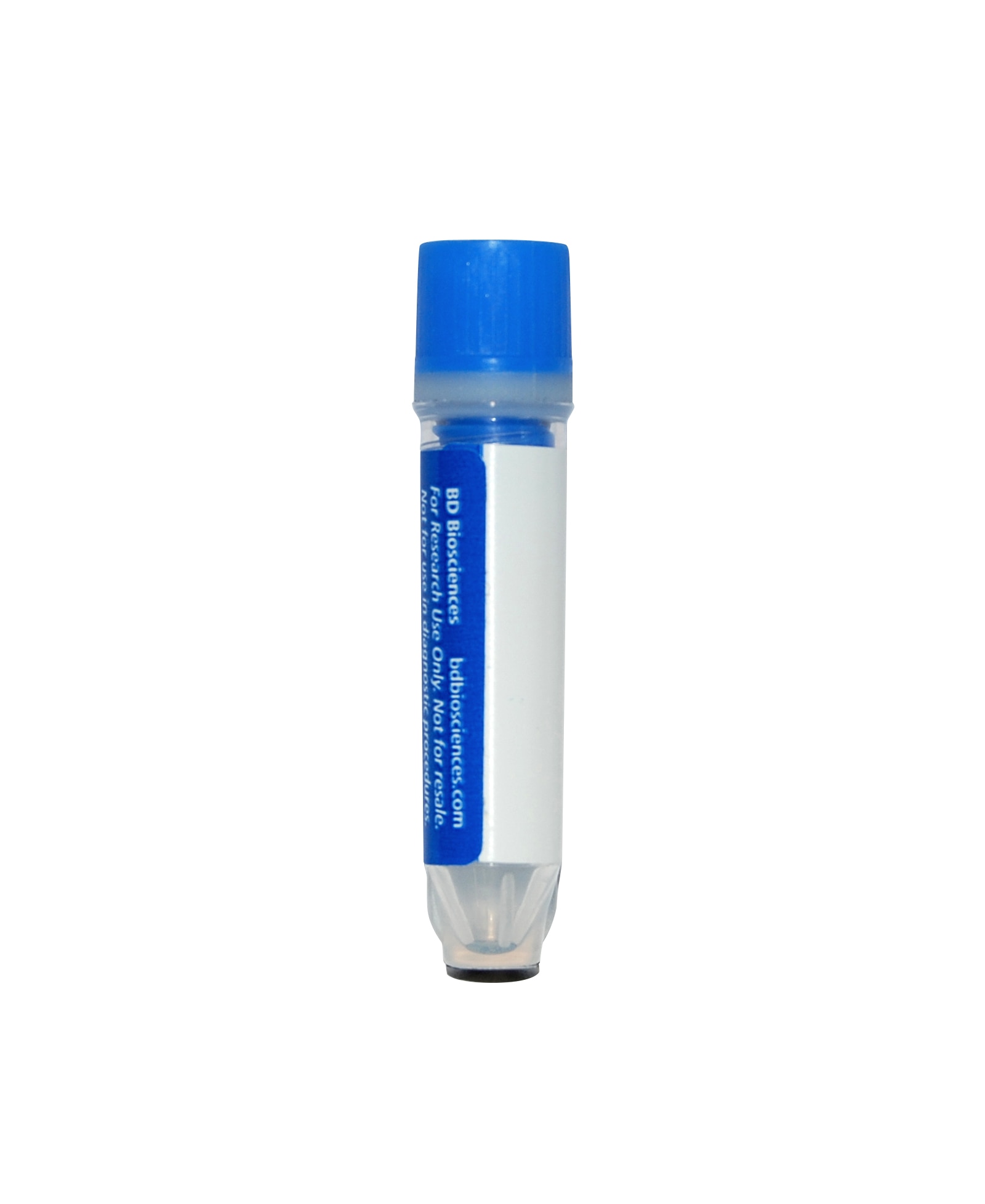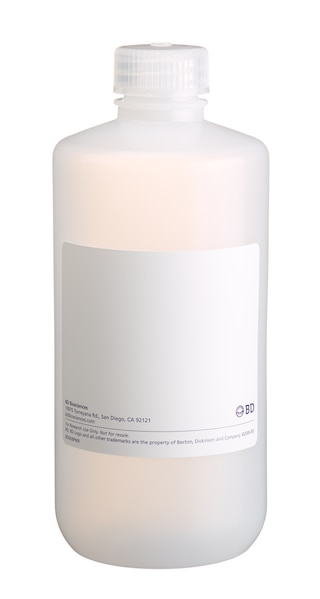Old Browser
This page has been recently translated and is available in French now.
Looks like you're visiting us from United States.
Would you like to stay on the current country site or be switched to your country?
BD® AbSeq Oligo Mouse Anti-Ki-67
Clone B56 (RUO)


Regulatory Status Legend
Any use of products other than the permitted use without the express written authorization of Becton, Dickinson and Company is strictly prohibited.
Preparation And Storage
Recommended Assay Procedures
Put all BD® AbSeq reagents to be pooled into a Latch Rack for 500 µL Tubes (Thermo Fisher Scientific Cat. No. 4900). Arrange the tubes so that they can be easily uncapped and re-capped with an 8-Channel Screw Cap Tube Capper (Thermo Fisher Scientific Cat. No. 4105MAT) and the reagents aliquoted with a multi-channel pipette. BD® AbSeq tubes should be centrifuged for = 30 seconds at 400 × g to ensure removal of any content in the cap/tube threads prior to the first opening.
When using BD® AbSeq intracellular markers with the Single Cell 3' Sequencing Intracellular CITE-seq, cells must first be fixed and permeabilized using the BD Rhapsody™ Intracellular AbSeq Buffer Kit before the antibody-oligo can bind to the protein. Refer to the list of required companion products below and see BD Rhapsody™ System Single-Cell Labelling with BD® AbSeq Ab-Oligos for Intracellular CITE-seq (Doc ID: 23-24464) for the complete BD® AbSeq intracellular multiomics staining protocol. Contact your local Field Application Specialist (FAS) for additional guidance.
Use standard laboratory safety protocols. Read and understand the safety data sheets (SDSs) before handling chemicals. To obtain SDSs, go to regdocs.bd.com or contact BD Biosciences technical support at scomix@bdscomix.bd.com.
Warning: All biological specimens and materials contacting them are considered biohazardous. Handle as if capable of transmitting infection and dispose of with proper precautions in accordance with federal, state, and local regulations. Never pipette by mouth. Wear suitable protective clothing, eyewear, and gloves.
Product Notices
- Please refer to www.bdbiosciences.com/us/s/resources for technical protocols.
- This reagent has been pre-diluted for use at the recommended volume per test. Typical use is 2 µl for 1 × 10^6 cells in a 200-µl staining reaction.
- Caution: Sodium azide yields highly toxic hydrazoic acid under acidic conditions. Dilute azide compounds in running water before discarding to avoid accumulation of potentially explosive deposits in plumbing.
- The production process underwent stringent testing and validation to assure that it generates a high-quality conjugate with consistent performance and specific binding activity. However, verification testing has not been performed on all conjugate lots.
- Source of all serum proteins is from USDA inspected abattoirs located in the United States.
- Species cross-reactivity detected in product development may not have been confirmed on every format and/or application.
- Please refer to http://regdocs.bd.com to access safety data sheets (SDS).
- Please refer to bd.com/genomics-resources for technical protocols.
- Illumina is a trademark of Illumina, Inc.
- For U.S. patents that may apply, see bd.com/patents.
Data Sheets
Companion Products






Recently Viewed
The B56 monoclonal antibody specifically binds to the Ki-67 antigen that is expressed in the nucleus of cycling cells (G1, S, G2, M cell cycle phases). During the G0 phase, the antigen cannot be detected. During interphase of the cell cycle, it is associated with nucleolar components, and it is on the surface of the chromosomes during M phase. Ki-67 is a large protein having 2 alternatively spliced isoforms, an N-terminal forkhead-associated domain, a C-terminal domain that binds to heterochromatin proteins, and multiple phosphorylation sites, the functions of which are still unclear. Because of the strict association of Ki-67 expression with cell proliferation, anti-Ki-67 antibodies are useful for the identification, quantification, and monitoring of growing cell populations.
Development References (12)
-
Alitheen NB, McClure SJ, Yeap SK, Kristeen-Teo YW, Tan SW, McCullagh P. Establishment of an in vitro system representing the chicken gut-associated lymphoid tissue.. PLoS One. 2012; 7(11):e49188. (Clone-specific: Immunohistochemistry). View Reference
-
Benson MJ, Elgueta R, Schpero W, et al. Distinction of the memory B cell response to cognate antigen versus bystander inflammatory signals. J Exp Med. 2009; 206(9):2013-2025. (Clone-specific: Intracellular Staining/Flow Cytometry). View Reference
-
Bigley V, Haniffa M, Doulatov S, et al. The human syndrome of dendritic cell, monocyte, B and NK lymphoid deficiency. J Exp Med. 2011; 208(2):227-234. (Clone-specific: Intracellular Staining/Flow Cytometry). View Reference
-
Bruno S, Crissman HA, Bauer KD, Darzynkiewicz Z. Changes in cell nuclei during S phase: progressive chromatin condensation and altered expression of the proliferation-associated nuclear proteins Ki-67, cyclin (PCNA), p105, and p34. Exp Cell Res. 1991; 196(1):99-106. (Biology: Intracellular Staining/Flow Cytometry). View Reference
-
Kouro T, Medina KL, Oritani K, Kincade PW. Characteristics of early murine B-lymphocyte precursors and their direct sensitivity to negative regulators. Blood. 2001; 97(9):2708-2715. (Clone-specific: Intracellular Staining/Flow Cytometry). View Reference
-
Mai HL, Nguyen TVH, Branchereau J, et al. Interleukin-7 receptor blockade by an anti-CD127 monoclonal antibody in nonhuman primate kidney transplantation.. Am J Transplant. 2020; 20(1):101-111. (Clone-specific: Intracellular Staining/Flow Cytometry). View Reference
-
Mueller YM, Petrovas C, Bojczuk PM, et al. Interleukin-15 increases effector memory CD8+ t cells and NK Cells in simian immunodeficiency virus-infected macaques.. J Virol. 2005; 79(8):4877-85. (Clone-specific: Intracellular Staining/Flow Cytometry). View Reference
-
Picker LJ, Hagen SI, Lum R, et al. Insufficient production and tissue delivery of CD4+ memory T cells in rapidly progressive simian immunodeficiency virus infection. J Exp Med. 2004; 200(10):1299-1314. (Clone-specific: Intracellular Staining/Flow Cytometry). View Reference
-
Pitcher CJ, Hagen SI, Walker JM, et al. Development and homeostasis of T cell memory in rhesus macaque. J Immunol. 2002; 168(1):29-43. (Clone-specific: Intracellular Staining/Flow Cytometry). View Reference
-
Rigillo A, Fuchs-Baumgartinger A, Sabattini S, et al. Ki-67 assessment-agreeability between immunohistochemistry and flow cytometry in canine lymphoma.. Vet Comp Oncol. 2021; 19(3):551-566. (Clone-specific: Immunohistochemistry, Intracellular Staining/Flow Cytometry). View Reference
-
Spargo LDJ, Cleland LG, Cockshell MP, Mayrhofer Graham. Recruitment and proliferation of CD4+ T cells in synovium following adoptive transfer of adjuvant-induced arthritis. Int Immunol. 2006; 18(6):897-910. (Clone-specific: Immunofluorescence, Intracellular Staining/Flow Cytometry).
-
Valenti LM, Mathieu J, Chancerelle Y, et al. High levels of endogenous nitric oxide produced after burn injury in rats arrest activated T lymphocytes in the first G1 phase of the cell cycle and then induce their apoptosis. Exp Cell Res. 2005; 306(1):150-167. (Clone-specific: Intracellular Staining/Flow Cytometry). View Reference
Please refer to Support Documents for Quality Certificates
Global - Refer to manufacturer's instructions for use and related User Manuals and Technical data sheets before using this products as described
Comparisons, where applicable, are made against older BD Technology, manual methods or are general performance claims. Comparisons are not made against non-BD technologies, unless otherwise noted.
For Research Use Only. Not for use in diagnostic or therapeutic procedures.
